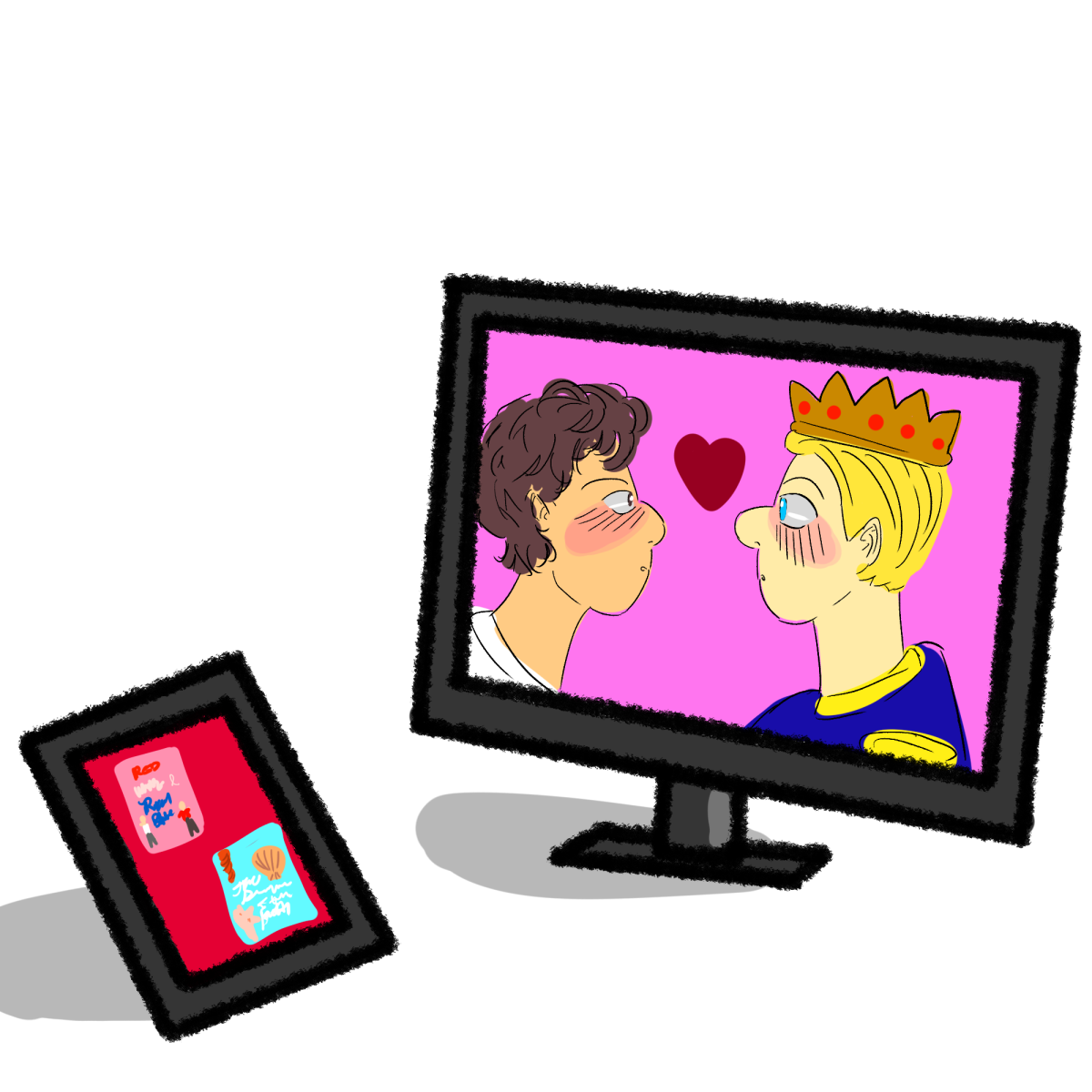In an age of streaming services and diminishing cable usage, the process of creating and distributing movies and television is shifting. In the past few years, especially this summer, books that have become popular on social media are slowly receiving movie and TV adaptations, usually released on streaming platforms.
Some screen adaptations, such as “Heartstopper” and “Red, White & Royal Blue,” feature queer romances as central parts of their stories, making their releases highly-anticipated events for fans of the books.
Sophie Lawrence, junior biology major, has been a fan of “Red, White & Royal Blue” since August 2019, only a few months after its release. She was excited to see it and other queer stories gain popularity on social media platforms. She said that people are so excited for these adaptations because they are lighthearted love stories that prominently feature queerness without centering homophobia and despair.
“[They’re] the same kind of shows that we get for straight people that no one criticizes, so it’s nice to have just cheesy, feel-good queer romance,” Lawrence said.
Another prominent draw for fans of the books that are now getting screen adaptations, specifically “Heartstopper” and “The Summer I Turned Pretty,” is how they portray teenage years in a way that doesn’t shy away from the real issues that young people face.
Caroline Brechin, sophomore theatere major, said “The Summer I Turned Pretty” is a prime example. Although it portrays high schoolers living out an idealized summer romance, she said it also shows them work through relationship drama and mental struggles.
“It [shows] all those emotions that just kind of build up,” Brechin said.
Erin Pake, sophomore music and communication major, said that “Heartstopper” also accurately portrays young people. It, too, features a cast of high school-aged characters (although they’re English, so ‘secondary’ school-aged).
Pake said that “Heartstopper” doesn’t let its young demographic stop it from realistically portraying characters’ mental health struggles.
“I appreciate the fact that it’s an adult writing these books and … treating the characters with full humanity,” Pake said. “I think a lot of times, youth characters’ struggles are written off as illegitimate.”
Pake said that the show does a good job of portraying social media as a valid and even meaningful way for people to connect.
“Sometimes you hear particularly older folks say, ‘Oh, that’s not real communication,’ but that’s how our generation has grown up communicating,” Pake said.
Social media doesn’t just have a role within these shows — it’s at the forefront of their fanbases. Brechin hadn’t even heard about “The Summer I Turned Pretty” until they saw it on their Instagram feed, and after watching the show, they wanted to read the book.
“In the show, you hear from the characters, and you get into their minds, but I want to see how the books do it,” Brechin said.
Lawrence believes books usually give characters more depth and nuance than an actor’s portrayal. She had seen this play out in discourse surrounding “Red, White & Royal Blue.” Some fans have taken issue with removing plot points in the book, particularly regarding protagonist Alex Claremont-Diaz, and say the movie suffers from their exclusion.
Lawrence said cutting certain parts was necessary for the movie to function, given that the runtime is already about two hours long. She said the parts left out, like Alex’s parents being divorced and the complexities of his racial identity, are important, but it would have done a disservice to the movie if they’d just been shoehorned in.
“I just think that the book touches on a broader scope of issues than the movie has time for,” Lawrence said.
These books and their screen adaptations both have their places in society. Although books have the capacity for deeper character exploration, movies and television have the benefit of immediate accessibility, which is especially necessary and relevant when considering queer visibility.
Pake said that in terms of storytelling, seeing people you identify with portrayed live-action on a screen is incredibly powerful. She said that although “Heartstopper” originated as a graphic novel, there is still something distinctly valuable in watching that story acted out by humans.
“It also furthers humanizing and normalizing all the things the characters go through, good and bad,” Pake said. “When you see a character in a drawing, you can imagine it happening, but I think there’s something very impactful about seeing it in action.”








